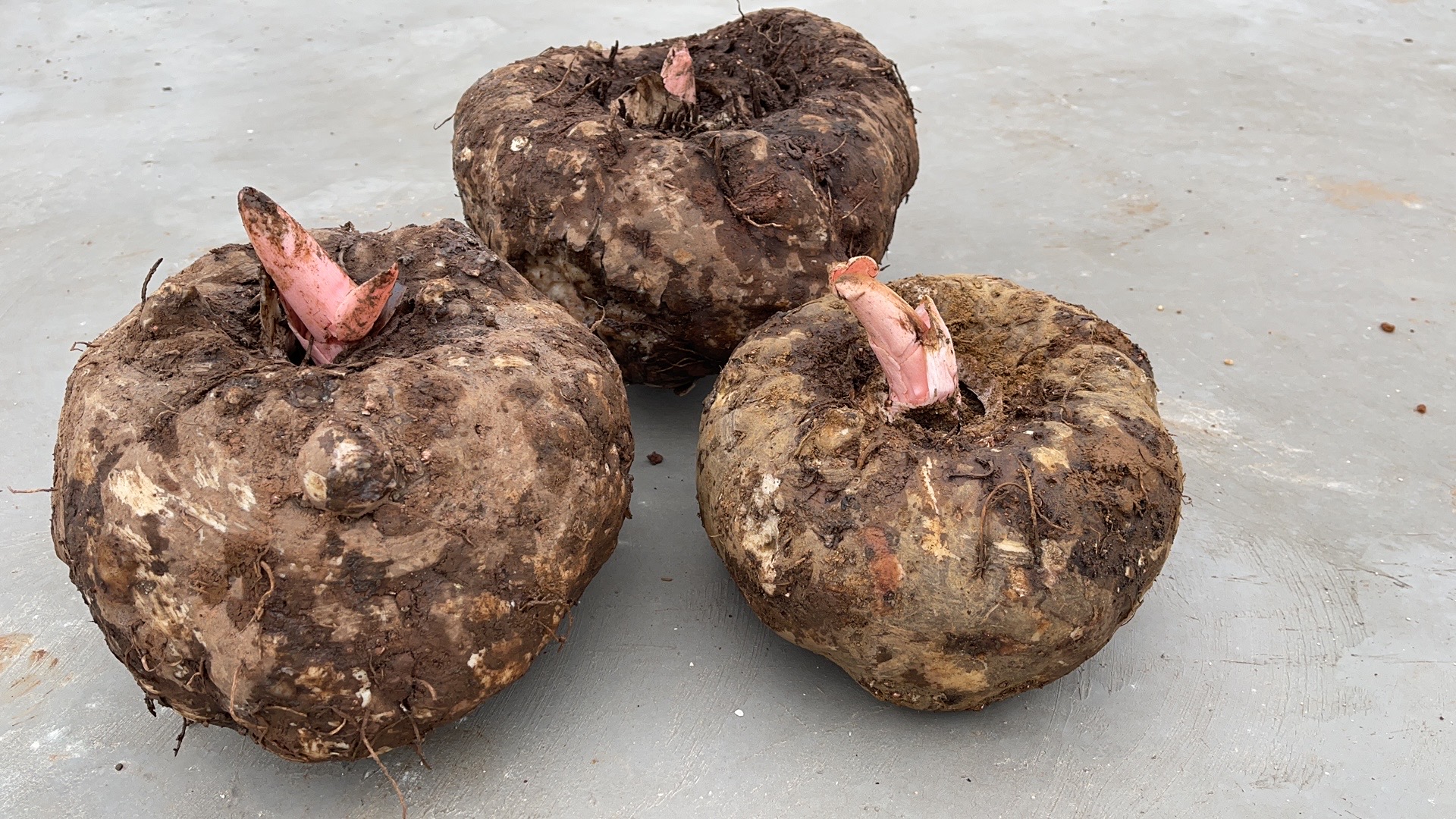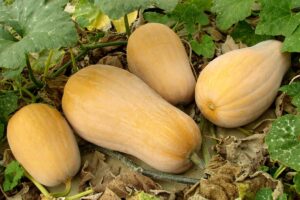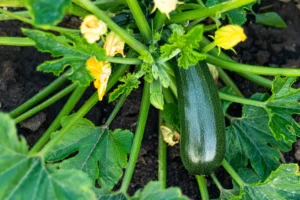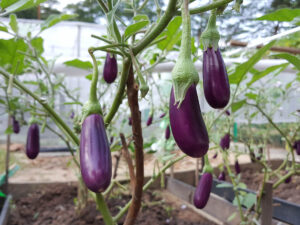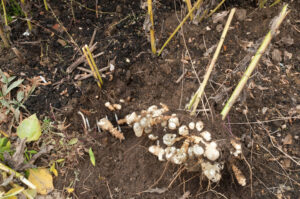How to Grow and Use Konjac: A Complete Guide
Are you looking to grow something unique in your garden this year? Konjac (Amorphophallus konjac), also known as devil’s tongue or elephant yam, might be the perfect addition to your culinary herb and specialty plant collection. This fascinating Asian plant produces a large edible corm that’s rich in glucomannan, a dietary fiber with numerous health benefits. In this comprehensive guide, you’ll learn everything you need to know about growing konjac in your garden, in containers, and even indoors, along with harvesting and using this versatile plant.
What is Konjac?
Native to parts of China, Japan, and Southeast Asia, konjac has been cultivated for centuries for its starchy corm (underground stem). This unusual plant is known for:
- Its impressive foliage that can reach 3-5 feet tall
- A striking, albeit malodorous, flower that appears before the foliage
- Its edible corm that’s processed into konjac flour, noodles (shirataki), and jellies
- High fiber content that’s beneficial for digestive health
According to the USDA Agricultural Research Service, konjac is classified as Amorphophallus konjac and belongs to the Araceae family. It’s increasingly being studied for its agricultural potential in certain regions of the United States (USDA National Agricultural Library).
Growing Conditions for Konjac
Before diving into specific growing methods, understanding the ideal conditions for konjac will significantly improve your chances of success:
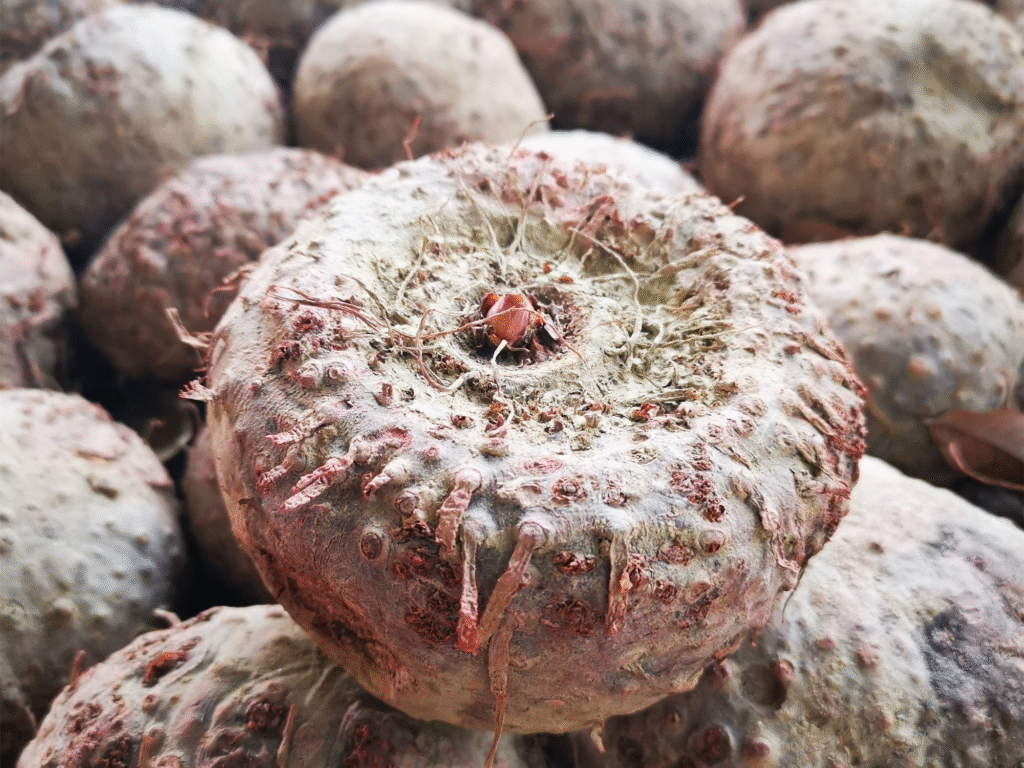
Climate Requirements
Konjac is a subtropical to tropical plant that grows best in USDA hardiness zones 7-10. However, with proper care, you can grow it in cooler climates by either treating it as an annual or bringing it indoors during winter.
Soil Requirements
For optimal growth, konjac requires:
- Well-draining, loamy soil rich in organic matter
- Slightly acidic to neutral pH (6.0-7.0)
- Consistent moisture without waterlogging
Light and Temperature
- Light: Partial shade to filtered sunlight
- Temperature: Thrives in temperatures between 65-85°F (18-29°C)
- Cannot tolerate frost or sustained temperatures below 55°F (13°C)
How to Grow Konjac from Seed
Growing konjac from seed requires patience but can be rewarding. Here’s your step-by-step guide:
Seed Preparation
- Obtain fresh konjac seeds from a reputable supplier, as viability decreases rapidly with age.
- Soak the seeds in warm water for 24-48 hours to soften the hard seed coat and improve germination.
- Prepare a seed-starting mix by combining equal parts peat moss, perlite, and fine compost.
Planting Seeds
- Fill small pots or seed trays with the seed-starting mix, leaving about 1/2 inch from the top.
- Place seeds on the surface and cover with a thin layer (about 1/4 inch) of the mix.
- Water gently and thoroughly, ensuring the soil is evenly moist but not soggy.
- Cover the containers with plastic wrap or a humidity dome to maintain moisture.
Germination and Early Care
- Place the containers in a warm location with indirect light. Ideal germination temperature is 70-80°F (21-27°C).
- Seeds typically germinate in 2-4 weeks, though some may take longer.
- Once seedlings emerge, remove the cover and place them in bright, indirect light.
- Keep the soil consistently moist and apply a diluted organic fertilizer monthly.
- Transplant seedlings to individual 4-inch pots when they have developed 2-3 leaves.
Growing Konjac from Corms
The most common and fastest method for growing konjac is using corms, which are similar to bulbs but technically different plant structures.
Selecting and Preparing Corms
- Purchase corms from specialty nurseries or online suppliers that focus on exotic plants.
- Choose firm, healthy corms without soft spots or signs of disease.
- If possible, select corms that are at least 2 inches in diameter for faster growth and flowering.
Planting Corms in Garden Beds
- Wait until all danger of frost has passed and soil temperatures reach at least 60°F (15.5°C).
- Choose a location with partial shade and protection from strong winds.
- Prepare the soil by incorporating plenty of compost or well-rotted manure.
- Dig a hole twice the width of the corm and about 2-3 inches deeper than the height of the corm.
- Place the corm in the hole with the growing point facing up.
- Cover with soil, leaving the tip just barely exposed.
- Water thoroughly after planting.
Growing Konjac in Containers
Container growing is ideal for konjac, especially in cooler climates where you’ll need to bring the plant indoors during winter.
Container Selection and Preparation
- Choose a deep pot with a minimum diameter of 12 inches for mature corms (use proportionally smaller pots for smaller corms).
- Ensure the container has ample drainage holes.
- Fill with a high-quality potting mix amended with compost and perlite for drainage.
Planting and Maintenance in Containers
- Plant the corm 2-3 inches deep with the growing point facing up.
- Water thoroughly after planting, then maintain consistent moisture without overwatering.
- Place the pot in a location that receives bright, indirect light or morning sun with afternoon shade.
- Fertilize monthly during the growing season with a balanced organic fertilizer.
Overwintering Container-Grown Konjac
- As foliage begins to yellow in fall, gradually reduce watering.
- After the foliage dies back completely, move the container to a cool, dry location (ideal temperature 50-60°F or 10-15°C).
- Allow the soil to dry out almost completely during dormancy.
- In spring, move the container to a warmer location and resume watering when growth begins.
Growing Konjac Indoors
With proper care, konjac can thrive as an indoor plant, adding exotic interest to your home.
Indoor Growing Requirements
- Light: Bright, indirect light; an east or west-facing window is ideal
- Temperature: Maintain temperatures between 65-80°F (18-27°C)
- Humidity: Moderate to high humidity (40-60%)
- Container: A deep pot with excellent drainage
- Soil: Well-draining potting mix with added organic matter
Indoor Growing Tips
- Consider using a humidifier or pebble tray with water to increase humidity around the plant.
- Rotate the pot regularly to ensure even growth.
- Be prepared for the dramatic dormancy period when the single leaf dies back.
- If your plant produces a flower, be aware that it may emit an unpleasant odor for a few days.
Konjac Plant Care Calendar
| Month | Garden-Grown Care | Container-Grown Care | Indoor Care |
|---|---|---|---|
| January | Plants dormant | Keep dry, minimal watering | Keep dry, minimal watering |
| February | Plants dormant | Begin light watering if growth appears | Begin light watering if growth appears |
| March | Prepare planting sites | Increase watering as growth begins | Increase watering as growth begins |
| April | Plant corms outdoors after last frost | Move containers outdoors when temperatures permit | Increase light exposure |
| May | Monitor for pests, water as needed | Regular watering, protect from strong sun | Regular watering, maintain humidity |
| June | Apply organic mulch, regular watering | Regular watering and feeding | Regular watering and feeding |
| July | Deep watering during dry periods | Daily watering in hot weather | Maintain consistent moisture |
| August | Continue regular care | Continue regular care | Maintain consistent moisture |
| September | Begin to reduce watering as growth slows | Begin to reduce watering | Begin to reduce watering |
| October | Allow foliage to die back naturally | Prepare to bring containers indoors | Reduce watering further |
| November | Apply winter mulch in zones 7-8 | Minimal watering during dormancy | Minimal watering |
| December | Plants dormant | Keep dry, cool | Keep dry, cool |
Common Pests and Diseases of Konjac
While konjac is generally resistant to many pests and diseases, there are a few issues to watch for:
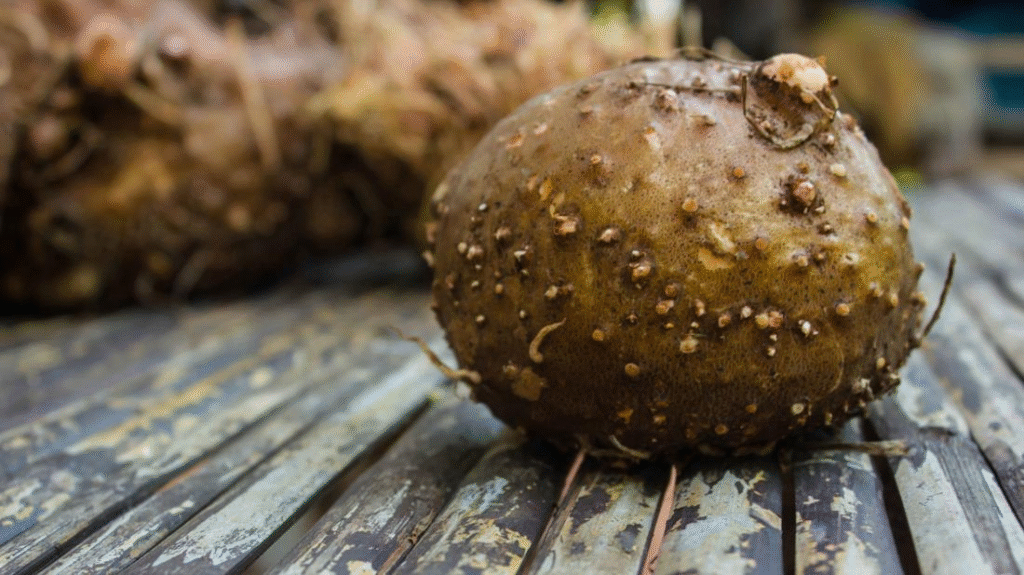
Pests
- Aphids: These small insects can cluster on new growth. Control with insecticidal soap or neem oil.
- Spider Mites: Especially problematic for indoor plants in dry conditions. Increase humidity and treat with insecticidal soap if needed.
- Slugs and Snails: Can damage emerging growth. Use organic slug baits or diatomaceous earth as barriers.
Diseases
- Root Rot: Caused by overwatering or poor drainage. Prevention is key with proper watering practices.
- Leaf Spot: Fungal disease that can occur in humid conditions with poor air circulation. Remove affected leaves and improve ventilation.
Harvesting Konjac Corms
Patience is essential when growing konjac for harvest, as corms need time to develop:
When to Harvest
- Konjac corms are typically ready to harvest after 2-3 years of growth.
- Harvest in late fall after the foliage has died back completely.
- Each year, the mother corm will be replaced by a larger new corm, along with several smaller offset corms.
How to Harvest
- Carefully dig around the perimeter of the plant, starting at least 6 inches from where the stem emerged.
- Lift the corm gently, taking care not to damage it.
- Brush off excess soil and inspect for any signs of damage or disease.
- Set aside small offset corms for replanting if desired.
Curing and Storing Harvested Corms
- Allow harvested corms to cure in a warm, dry location with good air circulation for 1-2 weeks.
- After curing, store corms in a cool, dry place in mesh bags or shallow boxes filled with dry peat moss or sawdust.
- Check periodically for any signs of mold or rot.
Using Konjac in the Kitchen
The culinary uses of konjac revolve around the processed corm, which is transformed into various products:
Traditional Konjac Products
- Konjac Flour: Ground dried corm used as a thickener and gelling agent
- Shirataki Noodles: Low-calorie, translucent noodles
- Konjac Jelly: Used in traditional Asian desserts
- Konjac Sponges: Natural exfoliating tools (non-culinary use)
Preparing Fresh Konjac
Important Safety Note: Raw konjac corm contains calcium oxalate crystals that can cause severe irritation. Never consume raw konjac. Proper processing is essential:
- Peel and slice the corm thinly.
- Boil in water for at least 30 minutes, changing the water 2-3 times.
- Further process by drying and grinding into flour or creating other products.
The U.S. Food and Drug Administration provides guidelines on the safe preparation of plants containing calcium oxalate crystals. You can learn more about food safety guidelines on their website: FDA Food Safety Information.
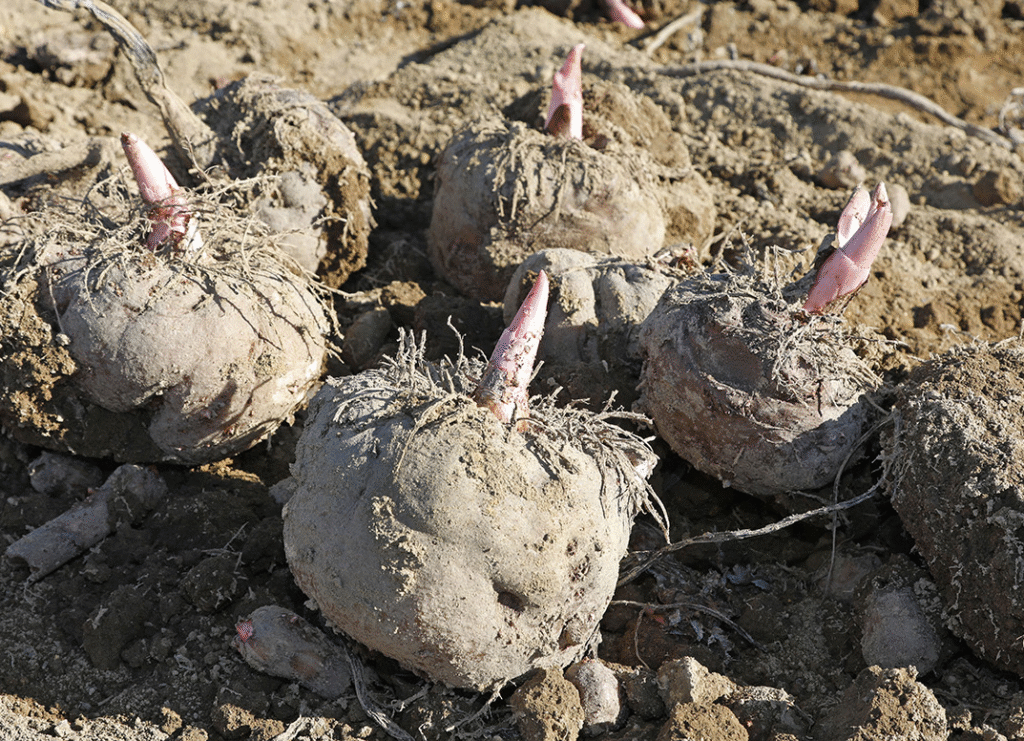
The Growing Konjac Market in the US
In recent years, the konjac market has experienced significant growth in the United States, driven by:
- Health Food Trends: The popularity of low-carb, gluten-free, and plant-based diets has increased demand for konjac products.
- Weight Management Applications: Konjac’s high fiber content creates a feeling of fullness with minimal calories.
- Specialty Asian Food Markets: Growing interest in authentic Asian cuisine has boosted demand for traditional ingredients.
According to market reports, the global konjac market is projected to continue growing, with the United States representing a significant portion of this growth. This represents an opportunity for small-scale growers to supply a niche but expanding market.
Conclusion
Growing konjac can be a rewarding experience that connects you with an ancient culinary tradition while providing access to a unique plant with numerous health benefits. Whether you’re growing konjac in your garden, in containers, or as an indoor specimen, the key is to understand its growth cycle and provide the appropriate care throughout the seasons.
With patience and attention to the specific needs of this fascinating plant, you can successfully grow konjac and explore its many uses. While it requires a commitment of time – especially if you’re growing from seed or for harvest – the distinctive appearance of the plant and its valuable corm make it well worth the effort for adventurous gardeners.
Remember that konjac is not just a culinary curiosity but a connection to centuries of traditional use across Asia. By growing your own, you’re participating in the continued appreciation of this remarkable plant while potentially contributing to its wider adoption in North American gardens and kitchens.
